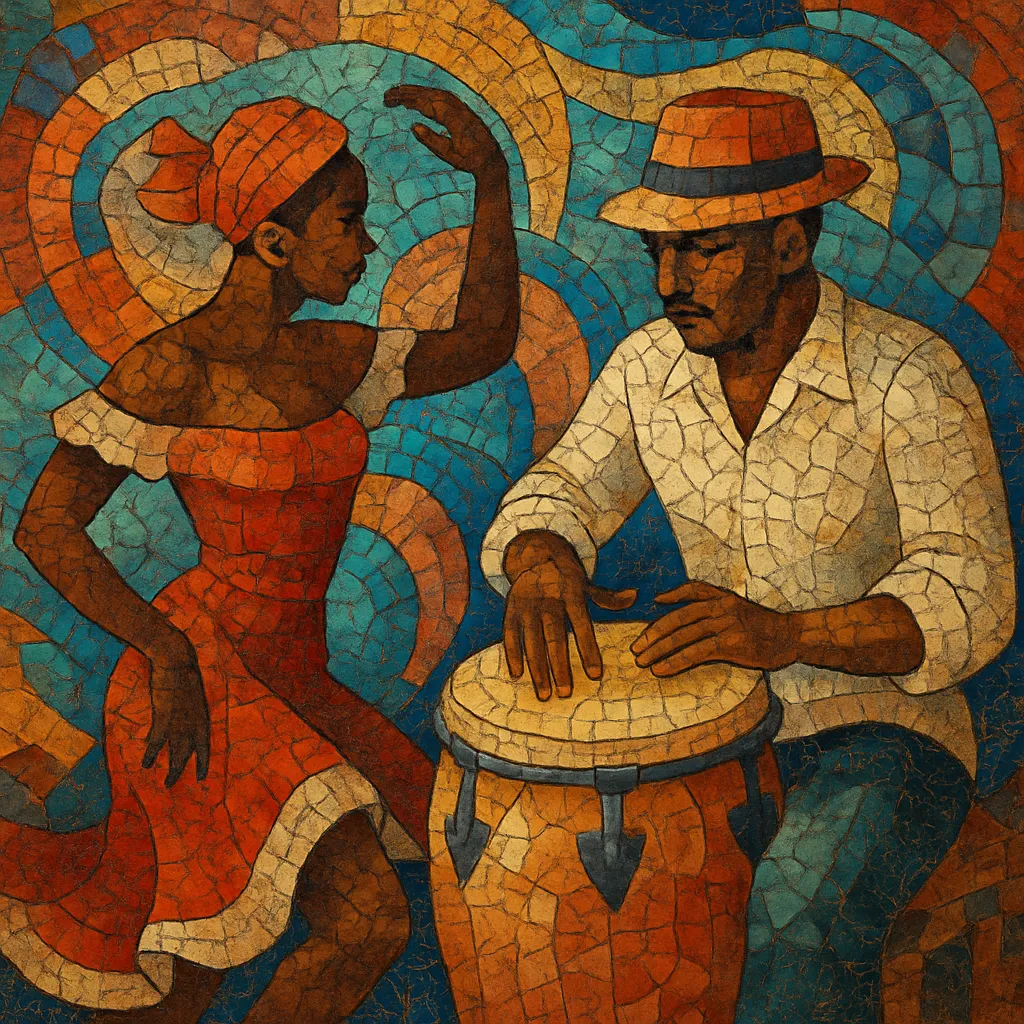Conga is a Cuban carnival processional music and dance associated with comparsas (street troupes), most famously from Santiago de Cuba and Havana.
It is characterized by a driving 2/4 or 4/4 march-feel, layered Afro-Cuban percussion, call-and-response vocals, and simple, repetitive melodic vamps that can be played for long parades.
Distinctive local colors include the corneta china (a piercing double-reed horn) in Santiago’s conga santiaguera and large drum sections that propel massive groups of dancers in a line or serpentine formation.
Conga developed in the early 20th century within Cuban comparsas—community-based carnival ensembles that took to the streets during festivities. In Santiago de Cuba, the style absorbed strong Afro-Haitian currents (notably from tumba francesa and Haitian méringue traditions) introduced by migrants in the 19th and early 20th centuries. The music emphasized communal participation, polyrhythmic percussion, and antiphonal (call-and-response) singing, all shaped into a forward-marching groove suitable for parading.
Two major regional flavors crystallized: the conga santiaguera, featuring the corneta china (a suona-like double reed) as a lead melodic voice, and the Havana conga, which leaned more on brass, whistles, and powerful drum corps. Both share a propulsive march pulse, but local instrumentation and patterns give each a distinct timbral identity.
In the 1930s, the “conga line” dance became a North American and European craze. Cuban and Cuban-led orchestras popularized conga-themed numbers in nightclubs and ballrooms. This global moment helped cement the conga groove as a recognizable Latin hallmark in big band, lounge, and early Latin jazz contexts.
Conga’s march-like pulse and layered percussion fed directly into later Cuban dance forms (mambo, then salsa) and the rhythmic vocabulary of Latin jazz. The genre remains a living carnival tradition in Cuba—especially in Santiago—where rival comparsas continue to innovate drum patterns, chants, and choreographies while preserving the communal spirit at the heart of conga.


